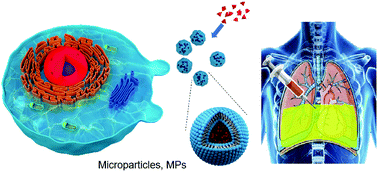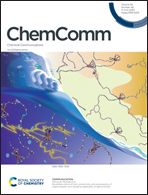Cellular microparticles for tumor targeting delivery: from bench to bedside
Abstract
Within the past few years, cell derived microparticles (MPs) have emerged as a highly potent natural drug delivery system for tumor therapy. We and others have engineered different cells to obtain eleven kinds of MPs, which efficiently delivered antitumor agents to recipient cells and achieved ideal treatment outcomes in a great number of rodent tumor models. More significantly, autologous tumor cell derived MPs packaging chemotherapeutic drugs were demonstrated to be safe and tolerable and accomplished decent objective clinical response in lung cancer patients in clinical settings, leading to their approval as a novel biotherapy for treating malignancies in China. In this feature article, we review MP mediated tumor targeting delivery. The impact of tumor cell derived MPs on tumor progression and metastasis will be briefly summarized. Different means to prepare, label and characterize MPs will be introduced. Advantages and limitations of distinctive cargo encapsulation strategies will be outlined and compared. Tumor cell MP mediated in vivo transport processes will be reviewed comprehensively. Representative MPs shed by platelets, endothelial cells, macrophages, and dendritic cells will be selected to showcase their advantages in tumor targeting delivery. Multifarious therapeutic agents, including chemotherapeutic drugs, oncolytic adenovirus, nucleic acids, antigens, antibodies, to name a few, have been transported to their targets for corresponding cancer therapies. Current challenges and future opportunities on translating MPs for tumor targeting delivery will be provided in the end.



 Please wait while we load your content...
Please wait while we load your content...